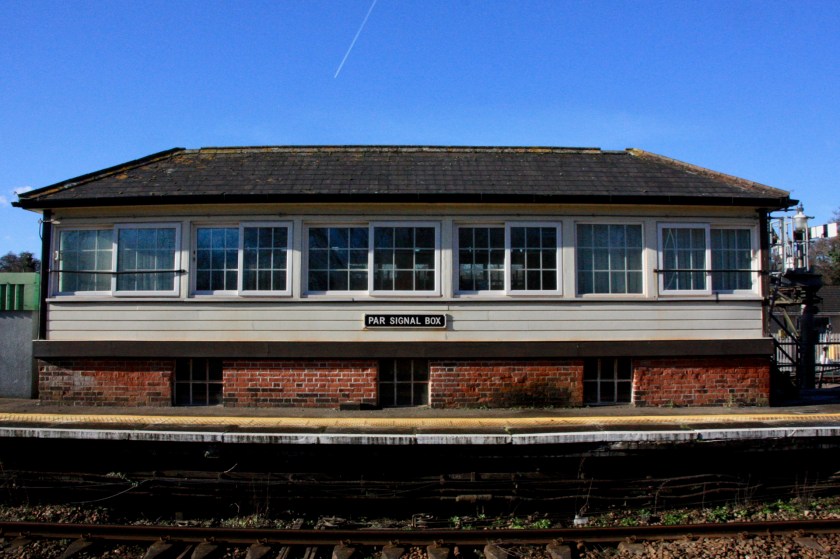
Time is almost up for the Grade II Listed 1879-vintage Great Western Railway signal box at Par in Cornwall, which will close in early March 2024, along with those at Lostwithiel (also Listed) and at Truro, as control of this section of Cornwall’s main line is transferred to Exeter Panel Signal Box.
Stepping into this remarkable 144-year old time-capsule, it is easy to see why it earned its listed status, when it was commended for its intactness and for being a good example of what was once a standard GWR signal box: “Its extension in 1893, when it was doubled in size, provides evidence of its historical development, while the box retains the 57-lever frame that was installed in around 1913.”
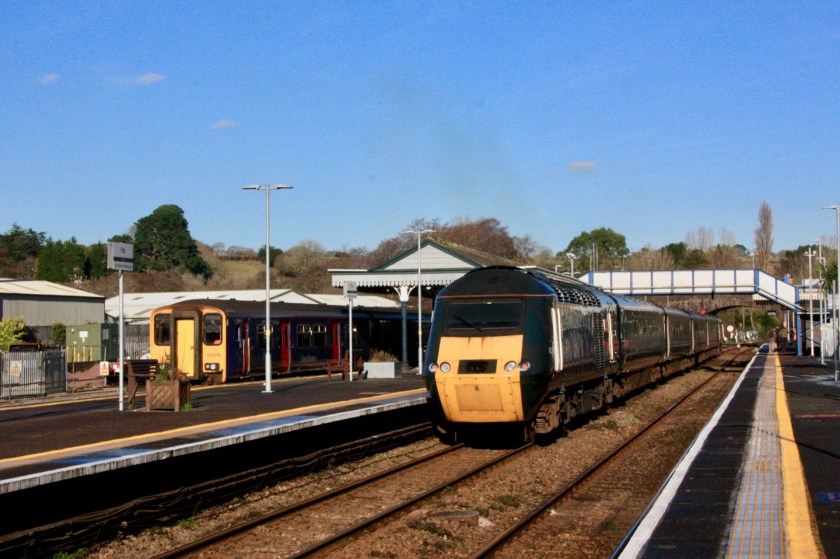
While its closure will mean the loss of more precious signalling heritage, Par Signal Box does at least have an interesting future as a training centre, that will be used to teach a new generation of recruits to Network Rail the workings of mechanical signalling, and so help keep alive that fascinating aspect of our railway history.
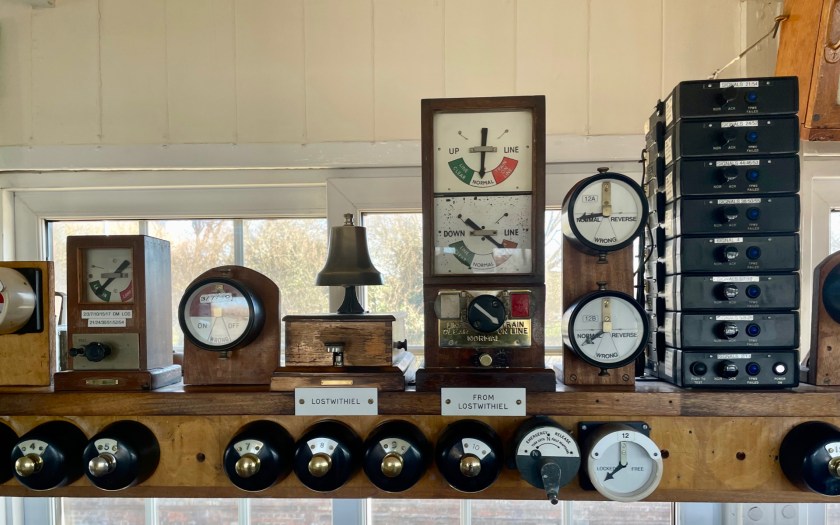
Par Signal Box currently controls a total of 14 semaphore arms from its 57-lever frame, with three of this number visible by looking west beyond the signal box, and comprising down starter (PR4) and a bracket with up home signals PR50 (for platform 3) and PR55 (for platform 2 – finial missing).

Another bracket, immediately in front of the signal box, reads to platform 3 and houses down home PR5 (access to the main line), PR8 (Newquay branch + shunting disc for Chapel siding), with the branch section signal PR9 round the right hand curve towards St. Blazey and mounted above St. Blazey’s fixed distant signal.

At the northern (London) end of the station PR54 is the starter signal from the main platform (2) alongside PR52 (no finial), which controls exit from Newquay branch platform (3). East of the road bridge a bracket on the west side of the line houses down home signal PR5 (main line) and a junction arm (PR7) for services going into platform 3.
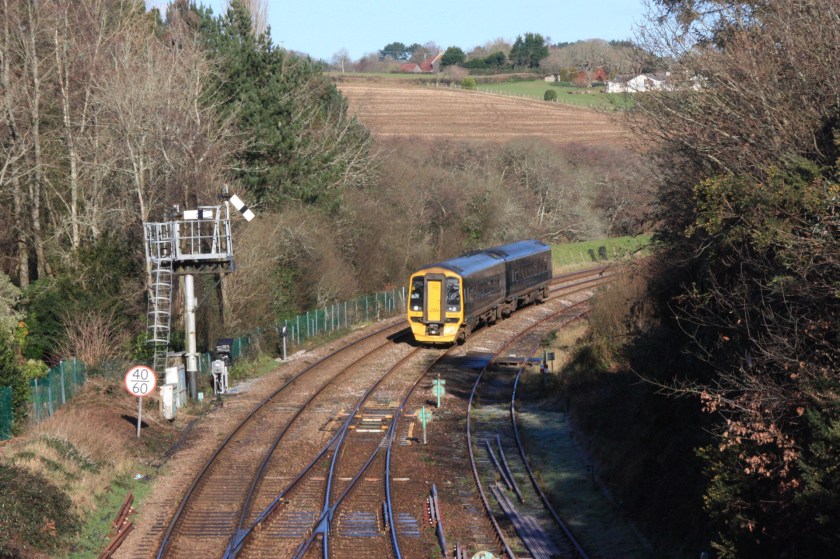
Out of sight on the right is PR30 controlling exit from the little-used down goods loop, while further on there are up section signal PR51 and finally down outer home signal PR2 on a bracket with a subsidiary arm controlling access to the goods loop.
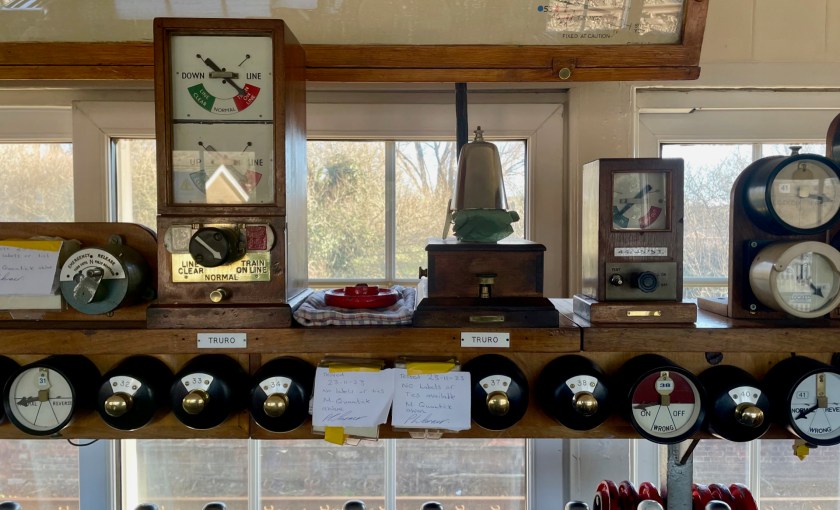
On what looked like being the final sunny day for some time (Friday, 19 January 2024) I discovered once again that the drawback in photography around Par station is that its north-south orientation meant taking shots looking south was made impossible by the bright winter sunshine.
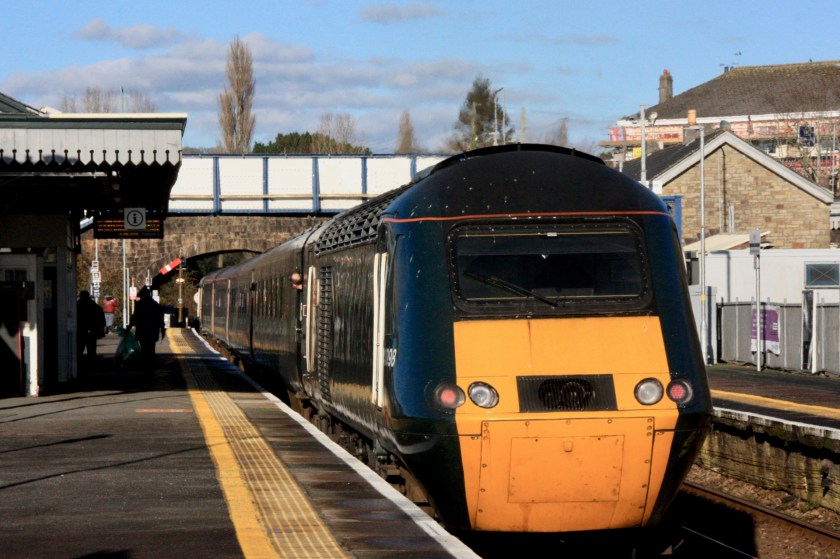
Apart from its doomed semaphores, another attractive feature of railway operations at Par is the regular appearance of the GWR Castle 2+4 HSTs, now that they are no longer working to Bristol and Cardiff, with their operation confined to stopping services between Plymouth and Penzance.
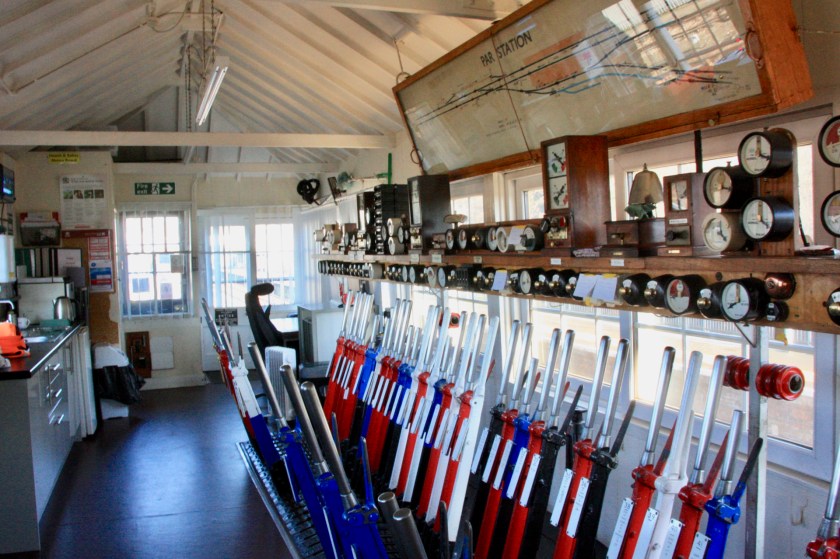
Spending around three hours at Par on 19 January I was able to see and photograph all four of the Castle sets in use that day – 43097/186 (set GW06), 43188/042 (GW07), 43198/093 (GW08) and 43156/098 (GW09).

As if to prove that the Castle sets can still be operated off their Cornish patch, I later saw set GW09 in platform 6 at Exeter St. David’s as I passed through on my way back to Reading, noting that it had worked empty from Plymouth before forming the 18.31 departure for Paignton and 19.44 return.
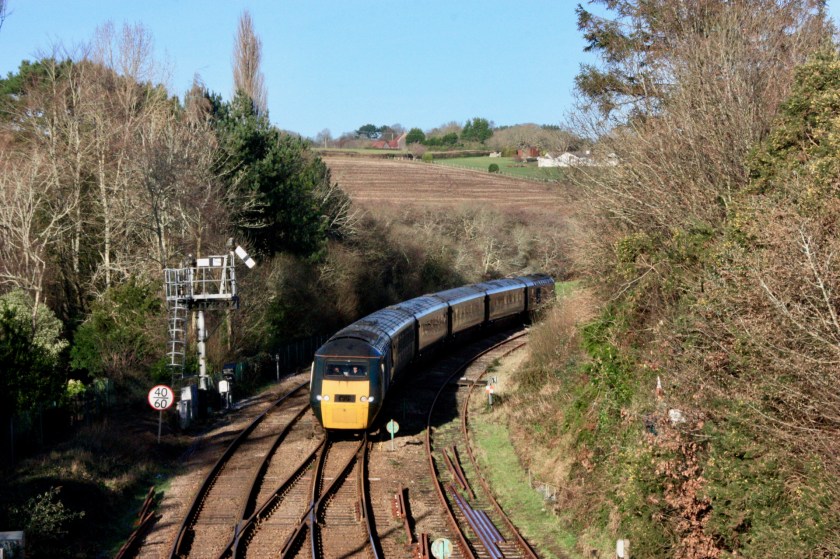
Slow progress and constant change are hallmarks of our national railway, but having paid numerous visits to Par over the past few years it is hard not to feel sad at the imminent demise of its semaphore signalling, and with it another irreplaceable piece of our railway history.
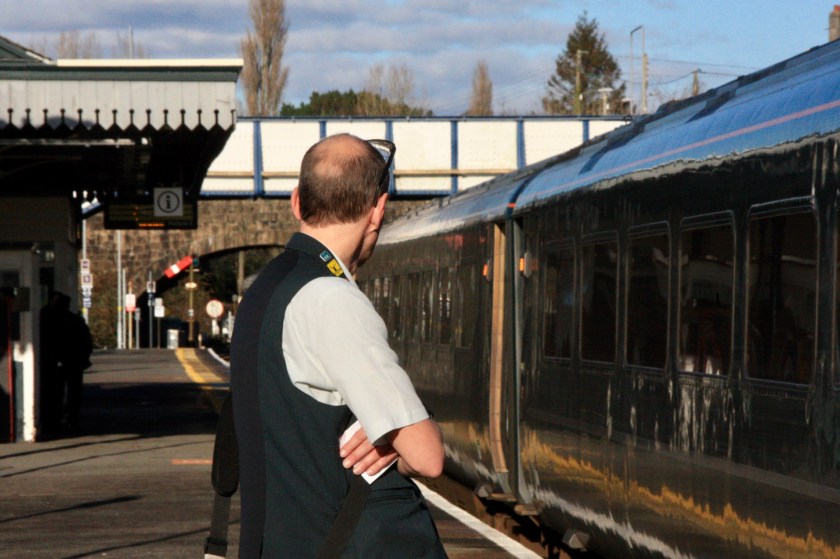
Once the trio of boxes at Par, Lostwithiel and Truro have closed it will leave just Liskeard and St Erth Signal Boxes controlling lower quadrant semaphores on the Cornish main line, along with St. Blazey and Goonbarrow Junction on the Newquay branch line.

You must be logged in to post a comment.